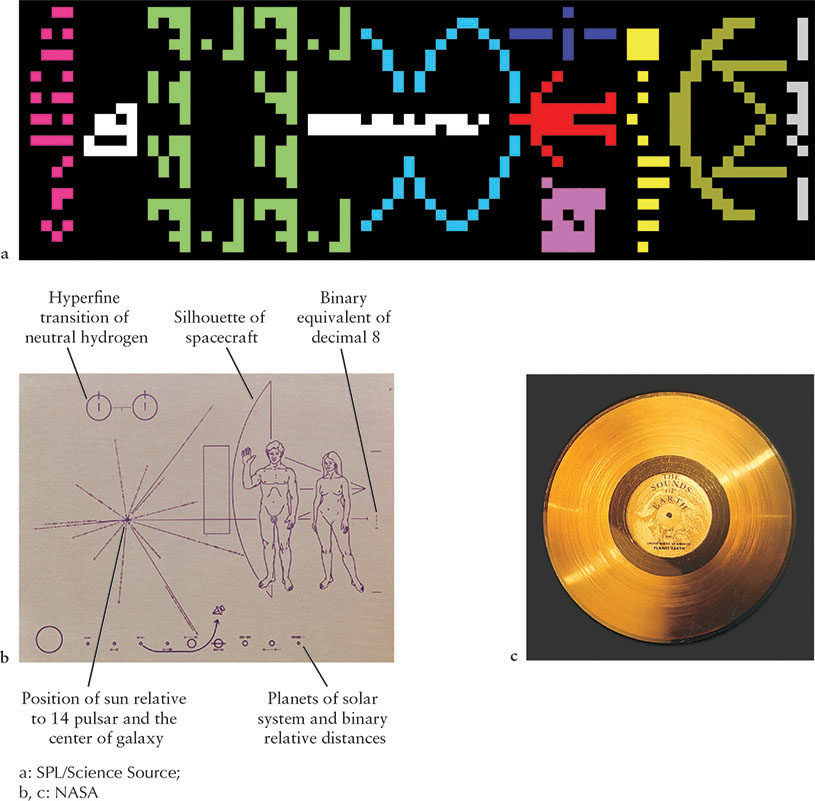Humans have been sending signals into space for more than a century
 We have been doing more than just listening passively for voices from the cosmos. Astronomers have intentionally broadcast well-focused signals through radio telescopes toward star systems likely to harbor advanced life, including a 1974 “hello” message aimed at the globular cluster M13 (Figure 19-10a) and a 2008 broadcast of the Beatles’ song “Across the Universe.” Unintentional broadcasts into space have occurred for longer than that. Since 1895, when the first radio transmission was made by the Italian engineer Guglielmo Marconi (1874–1937), we have been sending messages about ourselves into space. The spherical region within some 120 light-years of the solar system is now filled with signals from radio and television shows. If other advanced civilizations fall within that sphere, they could very well be listening to radio programs or watching television shows from decades past, trying to make sense of our species.
We have been doing more than just listening passively for voices from the cosmos. Astronomers have intentionally broadcast well-focused signals through radio telescopes toward star systems likely to harbor advanced life, including a 1974 “hello” message aimed at the globular cluster M13 (Figure 19-10a) and a 2008 broadcast of the Beatles’ song “Across the Universe.” Unintentional broadcasts into space have occurred for longer than that. Since 1895, when the first radio transmission was made by the Italian engineer Guglielmo Marconi (1874–1937), we have been sending messages about ourselves into space. The spherical region within some 120 light-years of the solar system is now filled with signals from radio and television shows. If other advanced civilizations fall within that sphere, they could very well be listening to radio programs or watching television shows from decades past, trying to make sense of our species.

Four spacecraft also carry information about the human race. Launched in 1972 and 1973, respectively, the Pioneer 10 and Pioneer 11 spacecraft carry plaques about us (Figure 19-10b). They are now making their way into interstellar space. In 1977, the two Voyager spacecraft were sent toward the outer solar system. They carry old-fashioned phonograph records encoded with human images and voices. Because space is so vast and the spacecraft are so small, the likelihood of their being discovered is truly remote. And yet millions, perhaps billions, of years from now, one of the spacecraft just might reach another race of intelligent creatures. From its path and the information on board, those creatures might be able to determine where the Pioneer and Voyager spacecraft came from. If their travel budgets are sufficiently large, they might even decide to come and visit us. At the least, they could send us radio messages. Will our descendants be here to receive them?

567